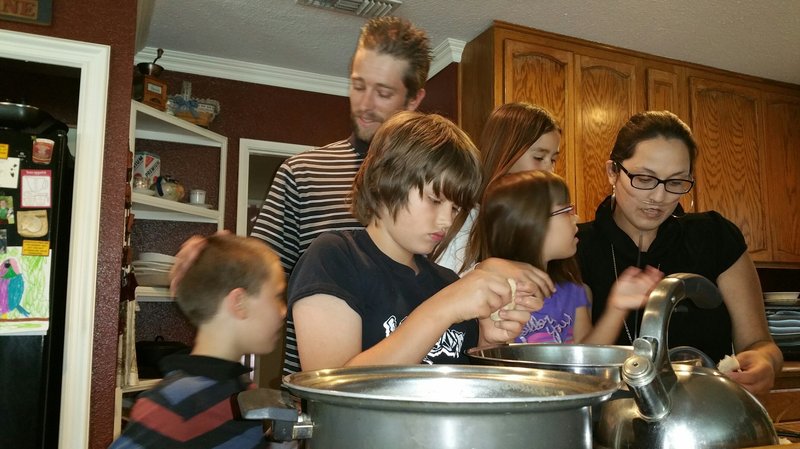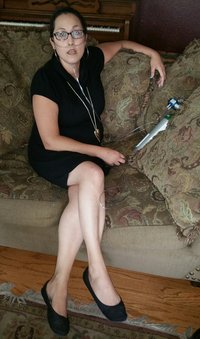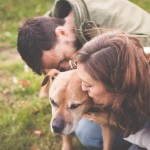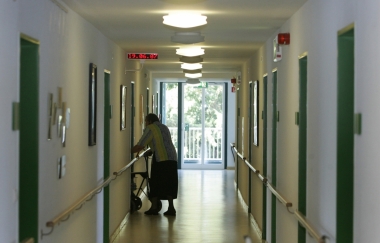by Sarah Kliff
La Crosse is a small town in western Wisconsin, right on the Minnesota border. It has about 51,000 residents. And La Crosse has, over the past three decades, done something remarkable: nearly all its residents have a plan for how they want to die.
“One of our doctors recently told me that making a plan is just like taking blood pressure or doing allergy tests,” says Bud Hammes, a medical ethicist at Gundersen Health System, one of La Crosse’s two hospital networks. “It’s just become part of good care here.”
End-of-life care planning is not currently a routine part of medical care in the United States. Most surveys show that about a quarter of American adults have completed an advance directive, spelling out what type of treatment they would want in a medical crisis where they could no longer make their wishes known.
Making a plan is just like taking blood pressure or doing allergy tests. It’s just become part of good care here.”
Americans don’t plan for death because health insurance plans don’t typically pay for that sort of planning, the way they cover blood tests or MRI scans. Medicare, which covers Americans over 65, certainly doesn’t pay for end-of-life care planning: when the Obama administration proposed such an idea during the 2009 health reform debate, it quickly spiraled into talks about “death panels” and “pulling the plug on Grandma.”
The dearth of end-of-life care planning in the United States often means that lives end in chaos, with families confused and overwhelmed trying to think through what their loved ones would want.
“It’s one of the most uncomfortable things,” says Donn Dexter, a neurologist in Eau Claire, Wisconsin, about a two-hour drive north of La Crosse. “The family can be so at odds, and the patient has not made clear what they want. I’ve seen families just torn apart by this, and their loved ones tortured with prolonged, futile treatment at the end of life.”
When La Crosse started talking about death in the mid-1980s, a few patients were annoyed. People who turned up at a physical and had a doctor ask about their end-of-life preferences were, understandably, confused.
“Patients were sometimes upset or anxious, like, ‘Why are you bringing this up? Is there something wrong with me?'” Hammes says. “There were lots of strong emotions and this sense that this was only for people at the end of life and dying. We had to work really hard to convince people we wanted every patient to have this discussion.”
But doctors kept asking, until patients got comfortable. And there were never any accusations of “death panels” or “rationing”: the program seemed to work because it was grassroots, rather than imposed by the government or some other large entity.
The story of La Crosse — and how its approach to end-of-life care is quickly, quietly spreading across the Midwest — gives some reason to be optimistic about the future of end-of-life care in America. It suggests that it is possible to move beyond death panels, and for doctors to have frank conversations with patients about how their life will end. The trick, it seems, is making these conversations feel like a natural part of the doctor-patient relationship, rather than a mandate imposed by a menacing bureaucracy. The only problem is this: for programs like La Crosse’s to work on a national level, the federal government is eventually going to have to get involved — and pay doctors for this type of service. Is that something America will ever be ready for?
“Situations where it wasn’t clear what was best”
/cdn0.vox-cdn.com/uploads/chorus_asset/file/3732030/shutterstock_269699033.0.jpg)
La Crosse’s push to get its residents to talk about death began in the 1980s, when Hammes joined Gundersen to develop a curriculum for the moral quandaries that medical students would go on to face as doctors. He shadowed some students to get a sense of the issues they confront.
“What I witnessed with such frequency were situations where it wasn’t clear what was best, and the patient’s perspective would help resolve that question, but we couldn’t get that perspective,” he says.
Hospitals don’t know when patients will die. But they do know death will happen — and can plan for that.
As an outsider to the medical system, Hammes found this baffling. Some of these patients had been in the hospital’s care for decades. While it was impossible to predictwhen a patient would die, the hospital clearly knew, with great certainty, that all lives end. Yet there was no apparent planning for that moment.
Hammes suggested that the hospital start talking to patients about death. They started with a small group of 60 patients with kidney failure. They and their families talked about priorities in medical care and whether they would want to continue living if they lost awareness of who they were, or where they were.
“What we noticed is that as we had those conversations, the conflicts became less frequent,” he says. “The norm became the family saying, ‘We know what to do; we had a conversation.'”
The success of Hammes’s pilot encouraged Gundersen and the other hospital in town to expand the program to the entire city. They would work not just with patients who were facing imminent crisis, like the dialysis group, but with any adult in the system.
By 1995, 85 percent of La Crosse residents had an advance planning document on their record. In 2008, it hit 90 percent. These documents were effective: researchers foundthat among those who died, the care they wanted nearly universally aligned with the care they received.
All of this happened without political blowback. The movement to talk about death spread quietly, from doctor to doctor and patient to patient.
And, perhaps most surprisingly, the La Crosse conversations appeared to save money. The city has some of the lowest end-of-life spending in the country; people who die in La Crosse spend approximately 32 percent less than the average Medicare patient in their last six months of life, the Dartmouth Atlas of Health Care shows.
This suggests something broken about the way end-of-life care usually works: it is much more intense than patients desire. When patient preferences are known — as they almost universally are in La Crosse — people tend to select less aggressive courses of treatment. And this is what has earned the La Crosse model so much praise: it’s shown a meaningful reduction in health spending as a side effect of respecting patient wishes.
And that’s why there’s a now a movement to bring the La Crosse program to the entire state of Wisconsin.
“We want every adult to have the conversation,” says John Maycroft, who oversees policy at the Wisconsin Medical Society, a doctors’ advocacy group. “It’s about the conversation. And the document is of course important, but if everyone can have this conversation, we’d all be better for it. We could shift the culture in a big way.”
“Do you have thoughts about what you would want to happen?”
/cdn0.vox-cdn.com/uploads/chorus_asset/file/3732050/shutterstock_183418442.0.jpg)
The name of the program La Crosse developed is called Respecting Choices. It’s essentially a script for having conversations about the end of life. The idea is to have patients talk about the type of care they would want if they could no longer speak on their own behalf, like after a serious car accident.
What makes Respecting Choices work is that it’s formulaic. It gives structure and steps to what is otherwise a difficult conversation — the type of conversation that medical school doesn’t prepare doctors to have. Those trained in the curriculum say having a script to follow is essential; they know exactly what information they need and how to get it. And they’re forced to practice, over and over again, until it feels like second nature.
I had Mia Morisette, an advance care planning coordinator for University of Wisconsin Hospital and Clinics, go through the script with me. In her distinctive Wisconsin accent, she started by asking me what I knew about advance directives — how they worked and why they were important. And she asked me to reflect on what I’d seen, in my own family, with the end-of-life experience going well or poorly.
A difficult conversation is guided by a script — making the interaction much less awkward
I told Morisette a bit about my grandmother who died in 2010. One of the things I remembered being stressful for family members was the notion of doing everythingpossible. There seemed to be a tremendous desire for everyone to walk away from the ICU thinking, “At least we did everything we could.” Sometimes that desire could override what was actually the best for my grandmother’s care. I didn’t want my family to have that type of burden, I told her.
Without knowing it, I had moved on to the next part of Morisette’s script: what I would want. Morisette had a very specific thing she wanted me to think about. I didn’t need to think about what I would do if I got a cancer diagnosis or found out I had a year to live. If that happened, we could revisit my options. Instead, she wanted me to think about a situation where I wouldn’t be able to make my care preferences known.
“Consider a situation where a serious car accident left you unable to communicate,” she said. “You’re receiving medical care to keep you alive, but there’s little chance you’ll ever recover the knowledge of who you are and who is around you. Do you have thoughts about what you would want to happen?”
I asked Morisette to define “little chance,” which she estimated to be around 5 percent.
Then I was stuck. I sat on the phone silent for a moment. Even as a reporter on these issues, I didn’t know what I wanted — generally, my hunch was to stop treatment with such long odds in my favor. But I also had a nagging voice wondering about that 5 percent chance.
Morisette told me this was all normal; this was the point of having the conversation in the first place — to have these thoughts, and to work through them. Most of her consultations usually take three or four visits to fully complete.
“It’s not all at once,” she told me about the process. “Sometimes it helps just to use the first conversation to get in the frame of mind.”
“We eventually want everyone to have this conversation”
/cdn0.vox-cdn.com/uploads/chorus_asset/file/3732076/shutterstock_181677413.0.jpg)
Maycroft of the Wisconsin Medical Society started working on bringing the La Crosse model statewide in March 2013. Minnesota had done the same thing a few years earlier, to generally positive results. Minnesotans, in 2014, showed higher rates of end-of-life planning than the national average.
The Wisconsin program started small, with six hospitals piloting La Crosse’s model elsewhere in the state. Over two years it’s grown steadily, up to 23 health-care systems. And the ultimate goal is to, in a decade or so, make Wisconsin look like La Crosse, with every resident having a plan for death.
“We eventually want everyone to have this conversation,” says Maycroft. “I want to show that this can be done, that it’s something Wisconsin can do and that other medical societies can do. We’re here for Wisconsinites, but we also want to be a national model.”
I was surprised to see that Wisconsin had moved this program forward with little public protest, given the fierce fight over death panels that happened in Washington a few years ago. But even more than that, the thing I found most baffling about the La Crosse model’s growth was that hospitals earn no money from having these conversations.
“We got no reimbursement,” says Hammes of launching the program in La Crosse. “For the hospital, this would lose money.”
“I want to show that this can be done, that it’s something Wisconsin can do and that other medical societies can do”
Whenever doctors do anything — whether it’s a blood test or brain surgery — they charge the patient’s health insurance plan a fee. Doctors, like lawyers, are constantly billing for the time they spend talking to or operating on patients. I’ve written on the health industry for six years now, and I’d never heard of a service that hospitals don’t charge for, like these end-of-life consultations.
Reimbursement would certainly help, Maycroft and others told me. But there’s also a risk that comes with formalizing the program: the vicious debates that happened when the Obama administration proposed paying doctors for this exact type of conversation.
“We haven’t asked for any legislation,” Maycroft says. “The state knows about us, but we’re not asking for any kind of money. We’ve avoided the death panel accusations.”
This makes it easier for programs like his to fly under the radar — but is also a limiting factor for expanding. Not all hospitals will want to do this type of work out of the goodness of their own hearts — and even hospitals that are on board have difficulty committing resources to a program that doesn’t pay.
“The biggest challenge for us is financial,” says Toni Kessler, the ethics manager at Community Care, a hospice provider participating in the Wisconsin program. “I spend a lot of time talking to our finance people, anyone I can get in front of. But it can be a tough case to make when we don’t get reimbursed.”
Minnesota, whose program began five years before Wisconsin’s, made its first request for state money last month, pushing for a bill that would fund the advance directive program.
“The day we introduced our legislation someone else dropped a bill relating to physician-assisted suicide,” says Sue Schettle, executive director of the Twin Cities Medical Society. “And I was thinking, ‘If there’s ever day where this issue would blow up, this was it. I was dreading reading the next day’s newspaper.'”
The explosion never happened. “Maybe it’s our Midwestern nature, that we’re just putting our heads down and getting to work,” Schettle mused to me.
Maycroft thinks the Wisconsin program can go forward for some time without any funding. So far, hospitals have paid his organization money to get trained in end-of-life care conversations, and that has kept the effort afloat.
At the same time, getting insurers and Medicare to reimburse for these conversations remains an important and challenging goal. Maycroft sent me a follow-up email on this point shortly after we talked.
“I’m not sure I expressed well just how much Medicare and insurer reimbursement would help us,” he wrote. “Our participants’ willingness to do this without reimbursement has been impressive, but (and feel free to quote me on this) Medicare reimbursement would make a huge difference. Our participants are doing everything they can, but sustainability of these programs will be a challenge without reimbursement.”
The lack of reimbursement for end-of-life planning suggests a limit to how far the La Crosse model can spread. It currently relies on the willingness of hospitals to donate their time, essentially having doctors volunteer time out of their already busy days.
Going national would almost certainly require Medicare to start paying for these conversations. And maybe, with programs like those in Minnesota and Wisconsin, Washington will begin to get ready.
Complete Article HERE!



















